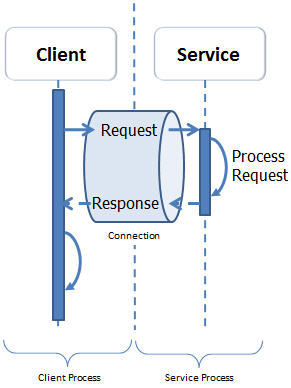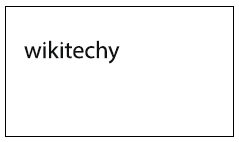Laravel response
What is Response in Laravel?
- Reponse in Laravel is HTTP Response object you are sending back to your visitor's browser, after the visitor(client browser) send a Request to one of your Routes.

laravel , laravel framework , laravel documentation , laravel tutorial , laravel install , laracasts
Basic Response:
- Each request has a response.
- Laravel provides several different ways to return response.
- Response can be sent either from route or from controller.
- The basic response that can be sent is simple string as shown in the below sample code.
- This string will be automatically converted to appropriate HTTP response.
Example:
- Step 1 − Add the following code to app/Http/routes.php file.
app/Http/routes.php
Route::get('/basic_response', function () {
return 'wikitechy';
});
- Step 2 − Visit the following URL to test the basic response. http://localhost:8000/basic_response
- step 3 − The output will appear as shown in the following image.

laravel , laravel framework , laravel documentation , laravel tutorial , laravel install , laracasts
Attaching Headers:
- The response can be attached to headers using the header() method.
- We can also attach the series of headers as shown in the below sample code.
return response($content,$status)
->header('Content-Type', $type)
->header('X-Header-One', 'Header Value')
->header('X-Header-Two', 'Header Value');
Example:
- step 1 − Add the following code to app/Http/routes.php file.
app/Http/routes.php
Route::get('/header',function(){
return response("wikitechy", 200)->header('Content-Type', 'text/html');
});
- step 2 − Visit the following URL to test the basic response. http://localhost:8000/header
- step 3 − The output will appear as shown in the following image.

Attaching Cookies:
- The withcookie() helper method is used to attach cookies.
- The cookie generated with this method can be attached by calling withcookie() method with response instance.
- By default, all cookies generated by Laravel are encrypted and signed so that they can't be modified or read by the client.
laravel , laravel framework , laravel documentation , laravel tutorial , laravel install , laracasts
Example:
- step 1 − Add the following code to app/Http/routes.php file.
app/Http/routes.php
Route::get('/cookie',function(){
return response("wikitechy", 200)->header('Content-Type', 'text/html')
->withcookie('name','Virat Gandhi');
});
- step 2 − Visit the following URL to test the basic response. http://localhost:8000/cookie
- step 3 − The output will appear as shown in the following image.

JSON Response:
- JSON response can be sent using the json method.
- This method will automatically set the Content-Type header to application/json.
- The json method will automatically convert the array into appropriate json response.
laravel , laravel framework , laravel documentation , laravel tutorial , laravel install , laracasts
Example:
- step 1 − Add the following line in app/Http/routes.php file.
app/Http/routes.php
Route::get('json',function(){
return response()->json(['name' => 'sachin', 'state' => 'mumbai']);
});
- step 2 − Visit the following URL to test the json response. http://localhost:8000/json
- step 3 − The output will appear as shown in the following image.

